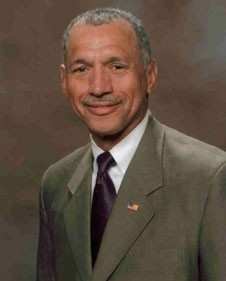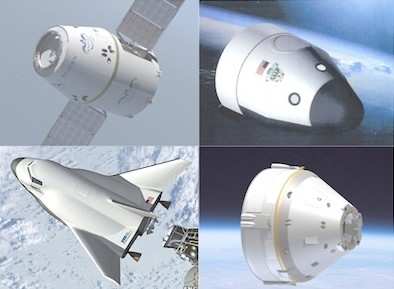Includes $4 Billion For Human Exploration Operations
As President Obama was releasing his proposed budget for FY2013,
NASA was rolling out its budget request for the fiscal year which
will begin October 1. The agency says in a news release that,
despite a "constrained" fiscal environment, the NASA FY13 budget
"continues to implement the space science and exploration program
agreed to by President Obama and a bipartisan majority in Congress,
laying the foundation for ground-breaking discoveries here on Earth
and in deep space, including new destinations, such as an asteroid
and Mars by 2035."

"This budget in-sources jobs, creates capabilities here at home
– and strengthens our workforce, all while opening the next
great chapter in American exploration," NASA Administrator Charles
Bolden (pictured) said. "And as we reach for new heights in
space, we're creating new jobs right here on Earth, helping to
support an economy that's built to last."
The NASA budget includes $4 billion for space operations and $4
billion for exploration activities in the Human Exploration
Operations mission directorate, including close-out of the Space
Shuttle Program, and funding for the International Space Station,
$4.9 billion for science, $669 million for space technology and
$552 million for aeronautics research.
"This budget puts us on course to explore farther into space
than ever before, revealing the unknown and fueling the nation's
economy for years to come," Deputy Administrator Lori Garver said.
"We are committed to ensuring that our astronauts are once again
launched from U.S. soil on American-made spacecraft, and this
budget provides the funds to make this a reality."
The budget supports NASA's continued work to develop the Space
Launch System, a new heavy-lift rocket to carry astronauts to
destinations such as an asteroid and Mars, and the Orion crew
capsule in which they will travel. Included are resources for final
preparation and manufacturing milestones for Orion's 2014
Exploration Flight Test 1 and preliminary design reviews of major
Space Launch System elements.

NASA has prioritized funding for its partnership with the
commercial space industry to facilitate crew and cargo transport to
the station. The $830 million for this work in the FY13 budget
advances progress towards a vibrant space industry that will create
well-paying, high-tech jobs to the U.S. economy, and reduce
America's reliance on foreign systems.
The budget also enhances use of the International Space Station
to improve life on Earth and help make the next great leaps in
scientific discovery and exploration.
NASA's science budget supports a balanced portfolio of
innovative science missions that will reach farther into our solar
system, reveal unknown aspects of our universe, and provide
critical data about our home planet. The agency will continue to
develop and conduct critical tests on the James Webb Space
Telescope leading to its planned launch in 2018. As the successor
to Hubble Space Telescope, James Webb again will revolutionize our
understanding of the universe. NASA also is developing an
integrated strategy to ensure the next steps for the robotic Mars
Exploration Program will support science as well as long-term human
exploration goals.
Space Technology work supported in the budget will drive
advances in new high-payoff space technologies such as laser
communications and zero-gravity propellant transfer, seeding
innovation that will expand our capabilities in the skies and in
space, supporting economic vitality, lowering the cost of other
government and commercial space activities, and helping to create
new jobs and expand opportunities for a skilled workforce.
NASA supports its commitment to enhancing aviation safety and
airspace efficiency, and reducing the environmental impact of
aviation by helping to accelerate the nation's transition to the
Next Generation Air Transportation System through investments in
revolutionary concepts for air vehicles and air traffic
management.
"The 2013 budget moves us forward into tangible implementation
of a sustainable and affordable exploration program," NASA's Chief
Financial Officer Elizabeth Robinson said.
 ANN's Daily Aero-Linx (05.06.25)
ANN's Daily Aero-Linx (05.06.25) ANN's Daily Aero-Term (05.06.25): Ultrahigh Frequency (UHF)
ANN's Daily Aero-Term (05.06.25): Ultrahigh Frequency (UHF) ANN FAQ: Q&A 101
ANN FAQ: Q&A 101 Classic Aero-TV: Virtual Reality Painting--PPG Leverages Technology for Training
Classic Aero-TV: Virtual Reality Painting--PPG Leverages Technology for Training Airborne 05.02.25: Joby Crewed Milestone, Diamond Club, Canadian Pilot Insurance
Airborne 05.02.25: Joby Crewed Milestone, Diamond Club, Canadian Pilot Insurance




